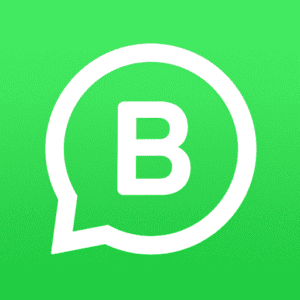Cloudpital # 1 is one of the top Remote Patient Monitoring has emerged as a transformative technology in healthcare, providing continuous monitoring and real-time data analysis to enhance patient care. By leveraging modern communication technologies, RPM allows healthcare providers to monitor patients’ health status outside traditional clinical settings, leading to improved patient outcomes. This essay explores how RPM improves patient outcomes by enabling early intervention, enhancing chronic disease management, improving patient engagement and adherence, reducing hospital readmissions, and facilitating personalized care.
Click to Start Whatsapp Chatbot with Sales
Mobile: +966547315697
Email: sales@cloudpital.com
Cloudpital # 1 Remote Patient Monitoring

Enabling Early Intervention
Continuous Monitoring
Remote Patient Monitoring systems continuously monitor patients’ vital signs and other health parameters, such as blood pressure, glucose levels, heart rate, and oxygen saturation. This constant vigilance enables healthcare providers to detect early signs of deterioration or abnormal trends that might not be apparent during periodic visits.
Real-Time Alerts
RPM devices are equipped with real-time alert systems that notify healthcare providers when a patient’s readings fall outside predefined thresholds. These alerts allow for immediate intervention, preventing minor issues from escalating into severe health crises.
Prompt Response
The ability to respond promptly to changes in a patient’s condition can significantly improve outcomes. For example, in patients with heart failure, RPM can detect early signs of fluid retention, prompting timely medication adjustments and preventing hospitalizations.
Enhancing Chronic Disease Management
Improved Disease Control
For patients with chronic diseases such as diabetes, hypertension, and COPD, RPM provides continuous feedback on their health status. This feedback helps in better disease control as patients and providers can make timely adjustments to treatment plans.
Personalized Treatment Plans
Remote Patient Monitoring allows for the creation of personalized treatment plans based on real-time data. Healthcare providers can tailor interventions to individual patients’ needs, improving the effectiveness of treatment and reducing the risk of complications.
Reduced Complications
By closely monitoring chronic conditions, RPM helps in early identification of potential complications, allowing for preventive measures. This proactive approach reduces the incidence of acute episodes and long-term complications associated with chronic diseases.

Improving Patient Engagement and Adherence
Empowering Patients
RCM empowers patients by involving them in their own care. Access to their health data enables patients to understand their conditions better and recognize the impact of their lifestyle choices on their health.
Enhanced Communication
RPM facilitates better communication between patients and healthcare providers. Patients can easily share their concerns and receive timely advice, fostering a collaborative approach to healthcare.
Increased Adherence
Patients who are engaged and informed about their health are more likely to adhere to prescribed treatments and lifestyle modifications. RPM systems often include reminders for medication and appointments, further enhancing adherence.
Reducing Hospital Readmissions
Post-Discharge Monitoring
RPM is particularly beneficial for patients recently discharged from the hospital. Continuous monitoring ensures that any signs of relapse or complications are detected early, allowing for swift intervention.
Reducing Readmission Rates
By catching issues early and managing them proactively, RPM reduces the likelihood of hospital readmissions. This not only improves patient outcomes but also reduces the financial burden on healthcare systems.
Transitional Care Support
RPM supports transitional care by providing continuity of care from the hospital to the home. It ensures that patients receive consistent monitoring and support during the critical post-discharge period, reducing the risk of readmission.
Facilitating Personalized Care
Data-Driven Decisions
RPM generates a wealth of data that healthcare providers can analyze to make informed decisions about patient care. This data-driven approach ensures that interventions are based on accurate and up-to-date information.
Customizable Alerts and Protocols
RPM systems can be customized to set specific alerts and care protocols tailored to individual patient needs. This personalization ensures that care is targeted and effective, addressing each patient’s unique health challenges.
Better Resource Allocation
By identifying patients who need immediate attention and those who are stable, RPM helps in better resource allocation. Healthcare providers can prioritize high-risk patients, ensuring that they receive the necessary care without delay.
Enhancing Quality of Life
Minimizing Disruption
RPM minimizes the need for frequent clinic visits, allowing patients to manage their health from the comfort of their homes. This convenience reduces the disruption to their daily lives and enhances their overall quality of life.
Psychological Benefits
Knowing that their health is being continuously monitored provides patients with a sense of security and peace of mind. This psychological benefit is particularly important for patients with chronic illnesses or those recovering from major surgeries.
Empowerment and Independence
RPM fosters a sense of empowerment and independence among patients. By taking an active role in managing their health, patients feel more in control of their well-being, leading to better health outcomes and quality of life.
Supporting Preventive Care
Identifying Risk Factors
RPM can help in identifying risk factors for various conditions, enabling preventive measures. For example, monitoring blood pressure trends can help in the early identification of hypertension, allowing for lifestyle changes and medication to prevent complications.
Promoting Healthy Behaviors
RPM systems often include features that promote healthy behaviors, such as activity tracking and diet monitoring. Encouraging patients to adopt healthier lifestyles can prevent the onset of chronic diseases and improve overall health outcomes.
Early Detection of Emerging Conditions
Continuous monitoring allows for the early detection of emerging health conditions that might not yet present noticeable symptoms. Early intervention can prevent these conditions from progressing, improving long-term health outcomes.
Supporting Population Health Management
Aggregated Data Insights
Medical Solutions in Saudi Arabia provides valuable data that can be aggregated and analyzed to gain insights into population health trends. This information can guide public health initiatives and policies, ultimately improving health outcomes on a larger scale.
Identifying High-Risk Populations
By analyzing RPM data, healthcare providers can identify high-risk populations and target interventions more effectively. This targeted approach ensures that resources are directed where they are most needed, improving overall health outcomes.
Enhancing Public Health Surveillance
RPM contributes to public health surveillance by providing real-time data on health trends. This information is crucial for monitoring disease outbreaks, managing chronic disease prevalence, and planning public health strategies.
Conclusion
Remote patient monitoring is revolutionizing healthcare by providing continuous, real-time monitoring of patients’ health status outside traditional clinical settings. This technology enables early intervention, enhances chronic disease management, improves patient engagement and adherence, reduces hospital readmissions, and facilitates personalized care. By empowering patients, supporting preventive care, and contributing to population health management, RPM significantly improves patient outcomes and enhances the overall quality of care. As healthcare systems continue to embrace digital health technologies, the role of RPM in improving patient outcomes will become increasingly important, leading to better health and well-being for individuals and populations alike.
Click to Start Whatsapp Chatbot with Sales
Mobile: +966547315697
Email: sales@cloudpital.com
Remote Patient Monitoring
Remote Patient Monitoring
Remote Patient Monitoring
How does Remote Patient Monitoring improve patient outcomes? similar software solutions prices were updated on 2025-07-06T00:44:34+00:00 in Saudi Arabia in Mecca, Medina, Riyadh, Khamis Mushait, Yanbu, Jeddah, Dammam, Unaizah, Uqair, Ha’il, Ta if, Al Bahah, Dhahran, King Abdullah Economic City, Najran, Diriyah, Qatif, Khafji, Jubail, Abqaiq, List of Cities and Towns in Saudi Arabia, Ras Tanura, Turubah, Jazan Economic City, Knowledge Economic City, Medina, Khobar, Abha, Tabuk, Saudi Arabia, similar software solutions prices were updated on 2025-07-06T00:44:34+00:00 We also provide in Saudi Arabia services solutions company in Hafar Al-Batin, Udhailiyah, Al-Awamiyah, Hofuf, Hautat Sudair, Buraidah, Tayma, Duba, ‘uyayna, Saihat, Al-Kharj, Al-ula, Jizan, Rumailah, Ar Rass, Arar, Shaybah, Al Majma’ah, Rabigh, Dhurma, Haradh, List of Saudi Cities by Gdp Per Capita, Badr, Sudair Industrial City, Baljurashi, Shaqraa, Al-Khutt, Habala, Ad Dawadimi, Dawadmi, Layla, similar software solutions prices were updated on 2025-07-06T00:44:34+00:00 Price is SAR 100 and this was updated on updated on 2025-07-06T00:44:34+00:00 similar How does Remote Patient Monitoring improve patient outcomes? software solutions prices were updated on 2025-07-06T00:44:34+00:00 in Saudi Arabia in Haql, Afif, Al-Abwa, Farasan, Al-Jaroudiya, Thadig, Al-Thuqbah, Al Wajh, Almardmah, Al-Zilfi, Muzahmiyya, Prince Abdul Aziz Bin Mousaed Economic City, Tharmada’a, Skaka, Um Al-Sahek, Sharurah, Tanomah, Bisha, Dahaban, Al Qunfudhah, Qurayyat, Saudi Arabia, Ha’ir, as Sulayyil, Al Lith, Turaif, Al-Gway’iyyah, Samtah, Wadi Ad-Dawasir, Az Zaimah, Safwa City, Jalajil, Harmah, Mastoorah, Hotat Bani Tamim, Jabal Umm Al Ru’us, Rafha, Qaisumah, Al-Ghat, Hajrah, Al-Hareeq. Excerpt: Jeddah (also spelled Jiddah, Jidda, or Jedda; Arabic: Jidda) is a Saudi Arabian city located on the coast of the Red Sea and is the major urban center of western Saudi Arabia similar software solutions prices were updated on 2025-07-06T00:44:34+00:00 Price is SAR 100 and this was updated on updated on 2025-07-06T00:44:34+00:00
6-26-2024



